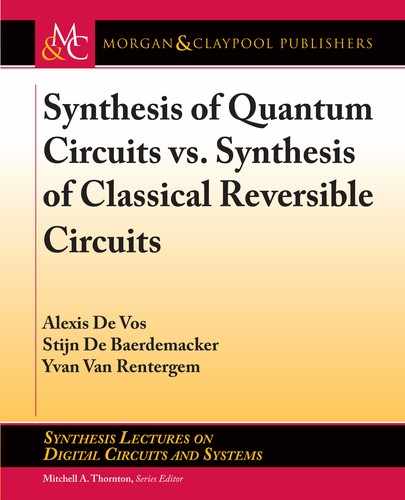
16 1. INTRODUCTION
A slightly more powerful property can be proved as follows.
eorem 1.2 In the horizontal permutation h
1
, it is always possible to not permute objects in the
upper row. Hence, if an integer n can be factorized as p q, then any permutation of n objects can be
performed by applying, subsequently,
• q 1 permutations, each of p objects,
• p permutations, each of q objects, and
• q permutations, each of p objects.
It is clear that eorem 1.1 is a direct consequence of eorem 1.2. Unfortunately, the
stronger eorem 1.2 lacks the beautiful symmetry of eorem 1.1. Symmetry is somewhat
restored by the existence of the following.
eorem 1.3 If an integer n can be factorized as p q, then any permutation of n objects can be
performed by applying, subsequently,
• q permutations, each of p objects,
• p permutations, each of q objects, and
• q 1 permutations, each of p objects.
1.9 MATRIX GROUPS
e study of matrix groups is interesting because any finite group is isomorphic to some ma-
trix group and many infinite groups as well. A matrix group consists of a set of square matrices
together with the operation of matrix multiplication. Because matrix multiplication is not com-
mutative, most matrix groups are not Abelian.
e reader is invited to check that the following six 2 2 matrices form a group:
1 0
0 1
;
1=2
p
3=2
p
3=2 1=2
;
1=2
p
3=2
p
3=2 1=2
;
1 0
0 1
;
1=2
p
3=2
p
3=2 1=2
; and
1=2
p
3=2
p
3=2 1=2
: (1.10)
Surprisingly, this group is isomorphic to the group of the six 3 3 permutation matrices (1.8)
of S
3
.
Any matrix group consists of merely invertible matrices (a.k.a. non-singular matrices).
e singular matrices (i.e., the matrices with zero determinant) have no inverse.
..................Content has been hidden....................
You can't read the all page of ebook, please click here login for view all page.
